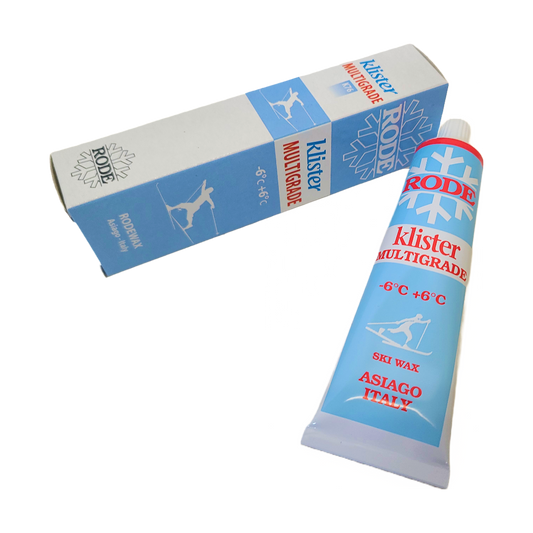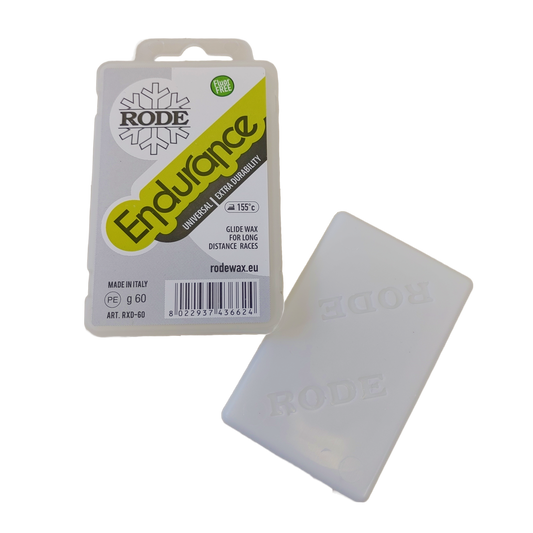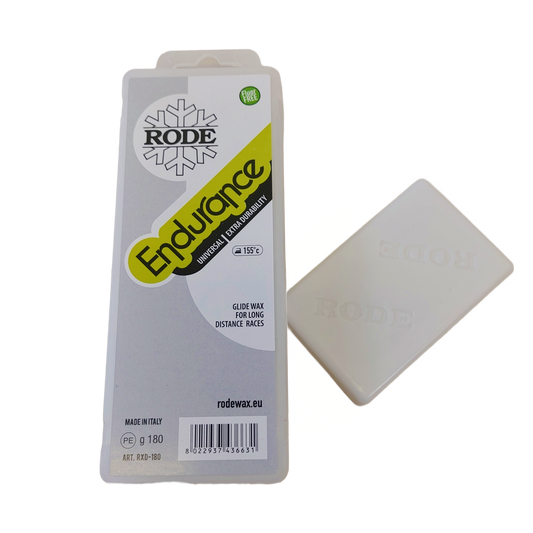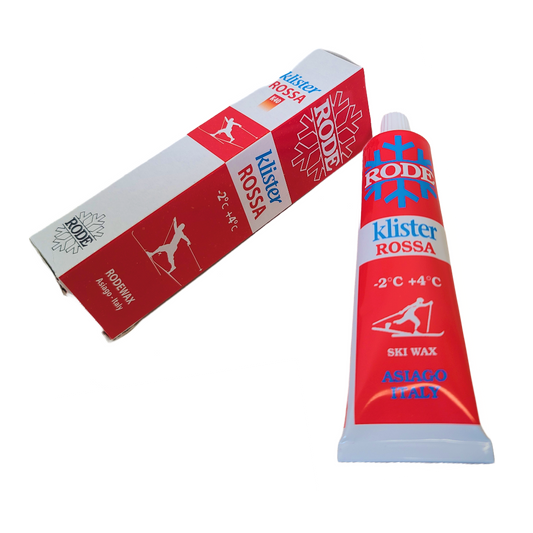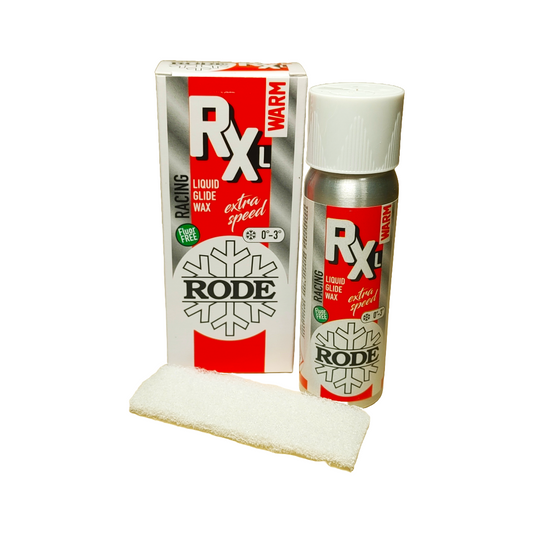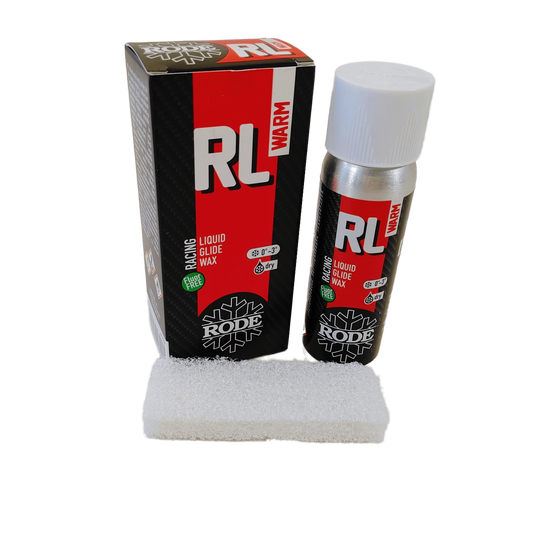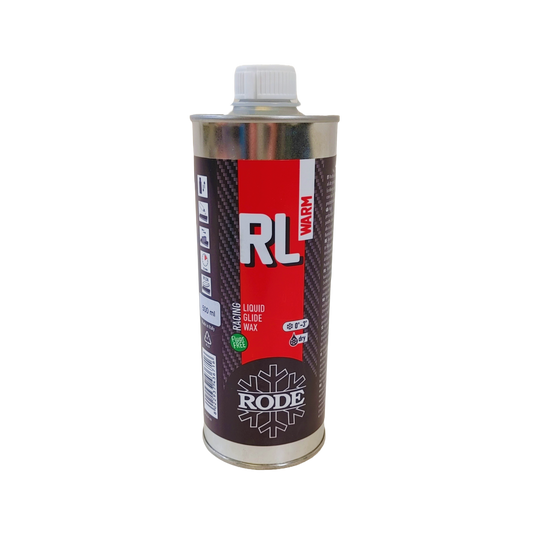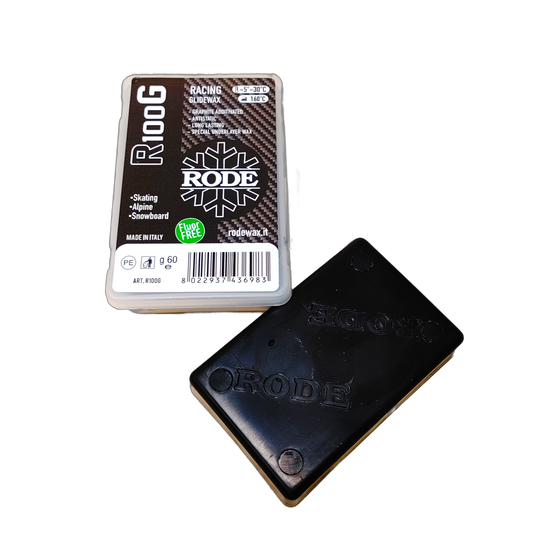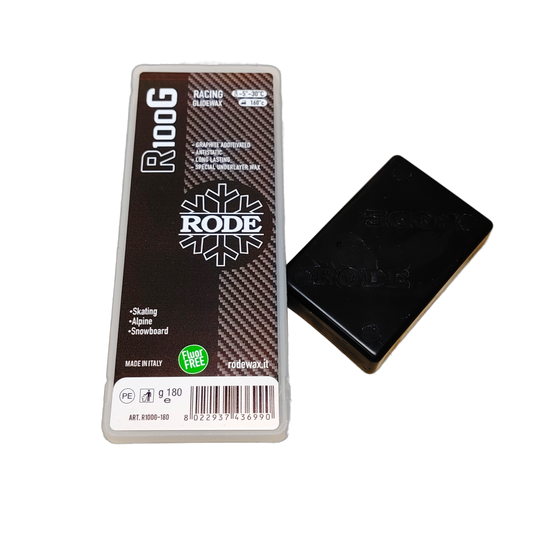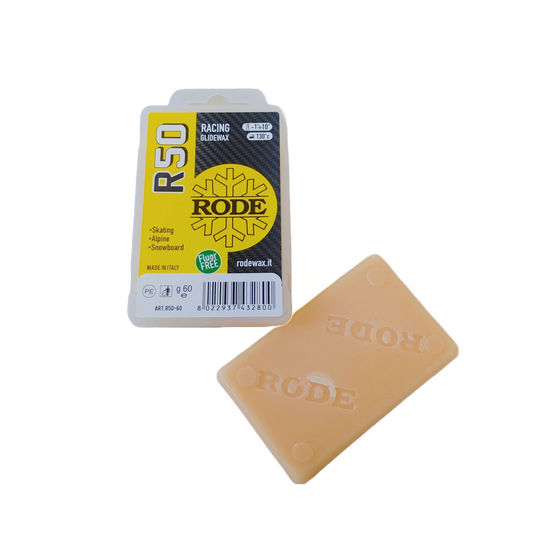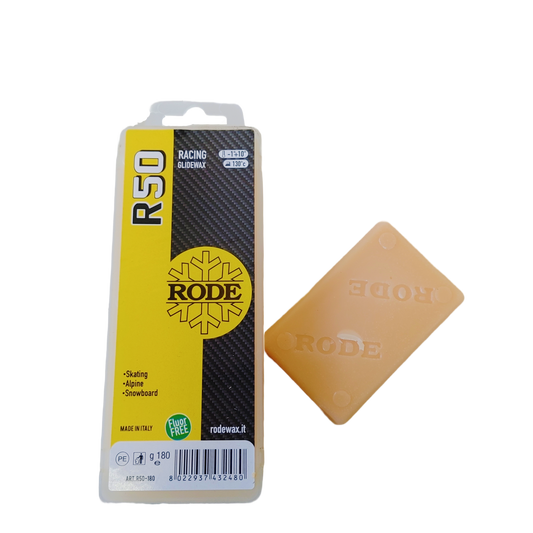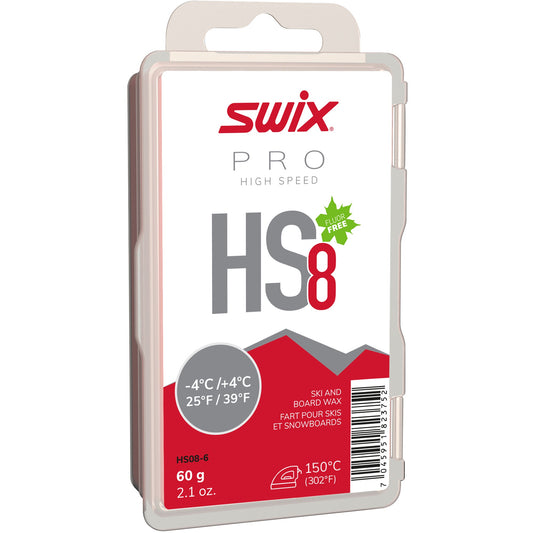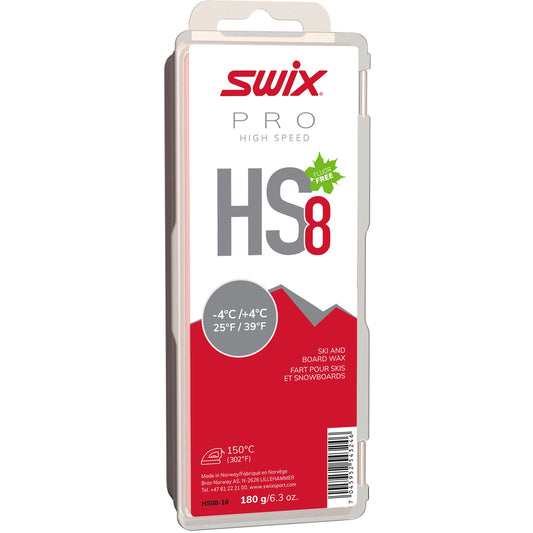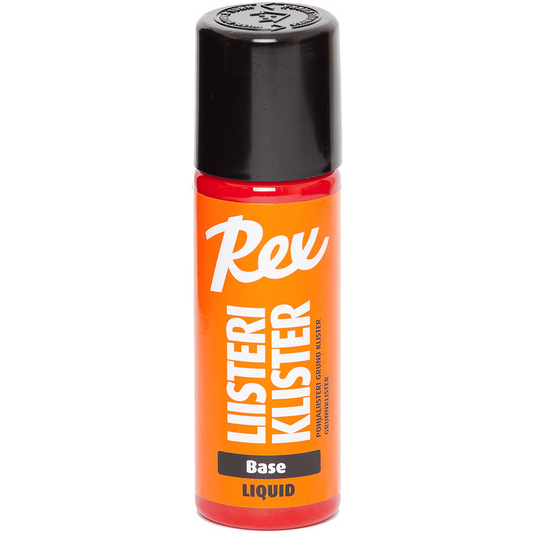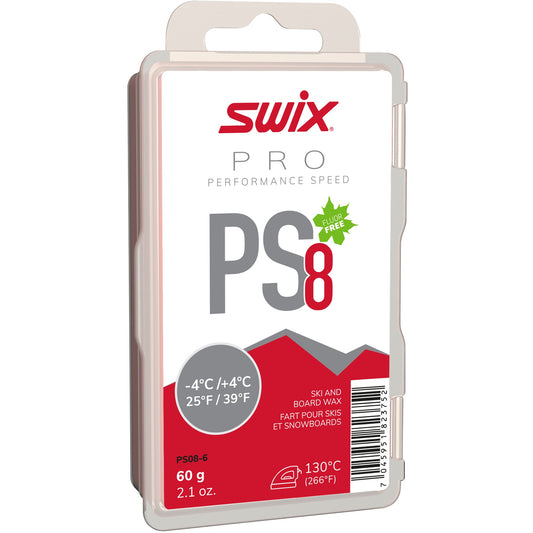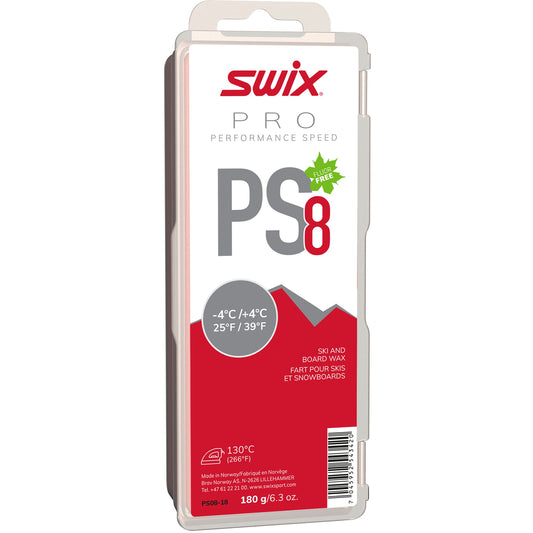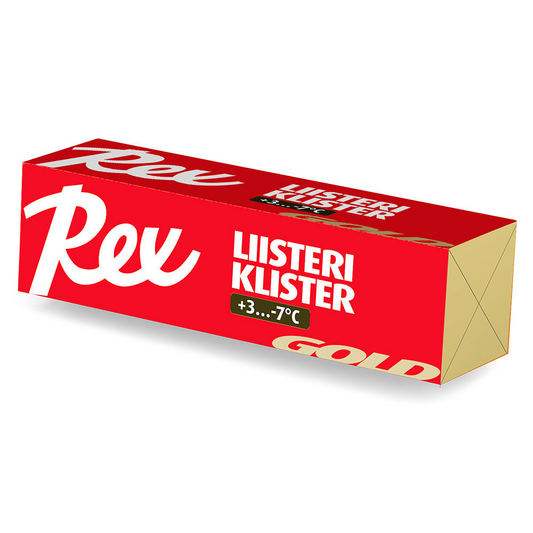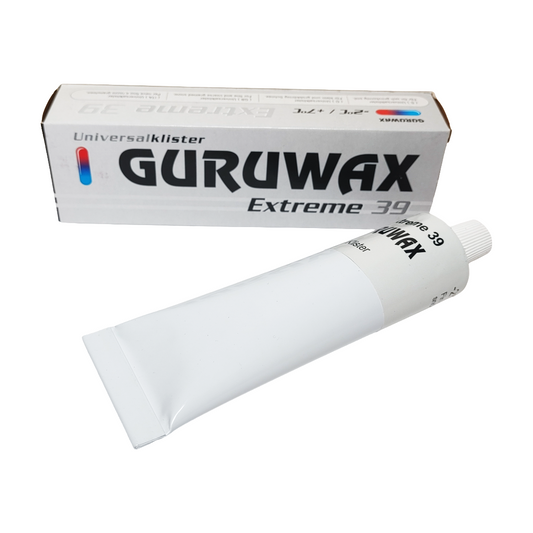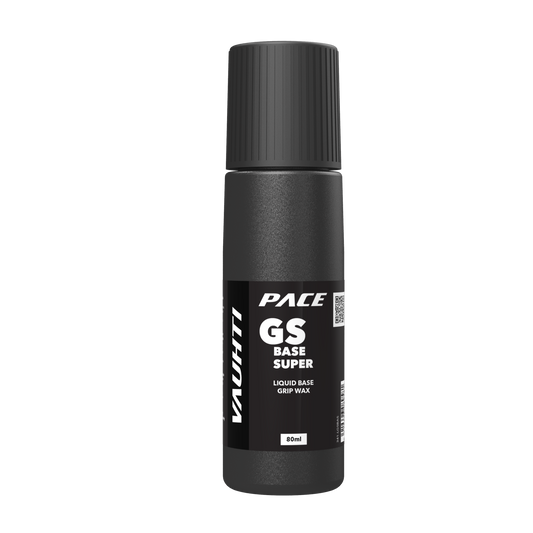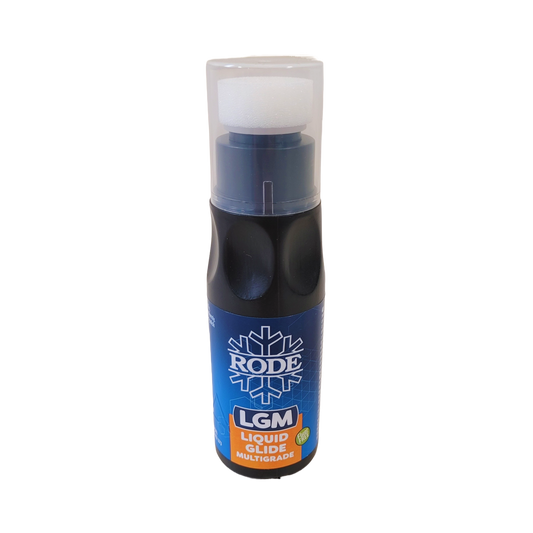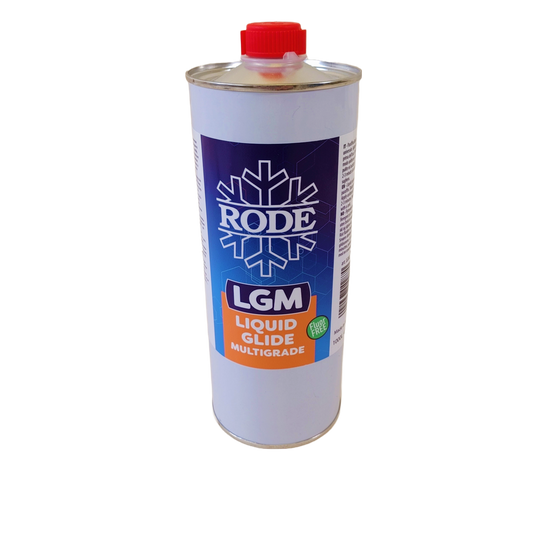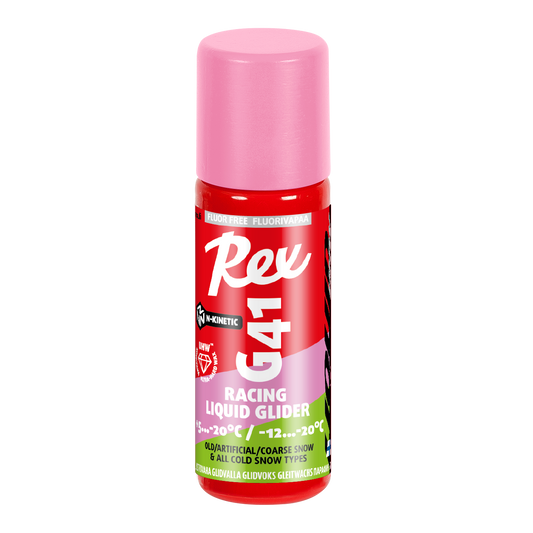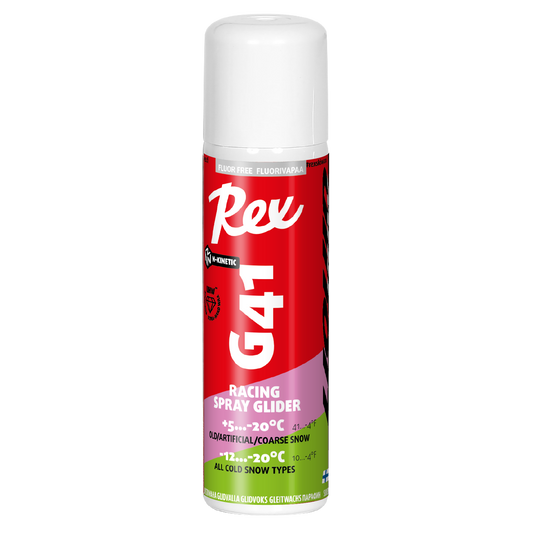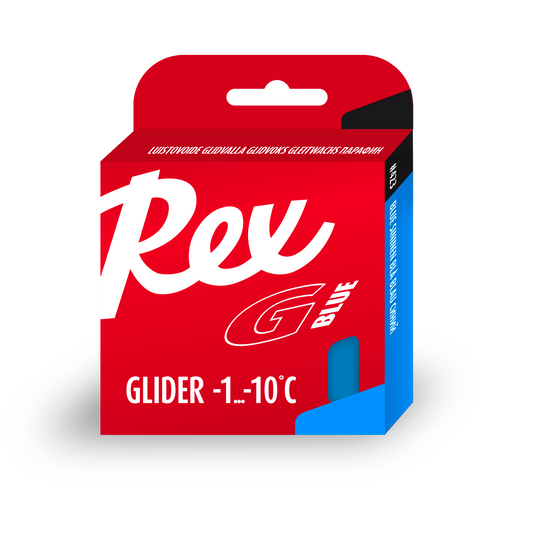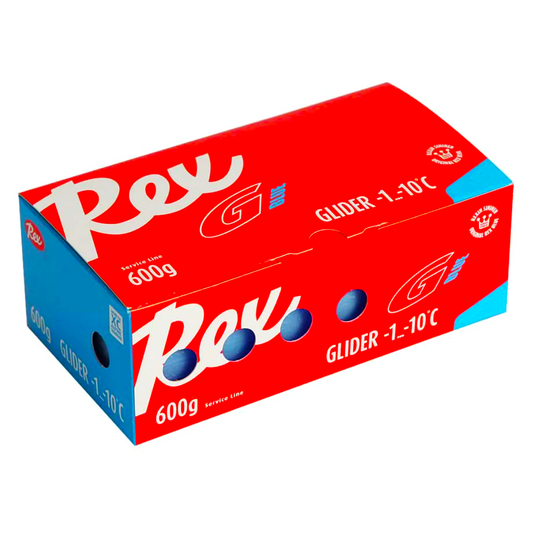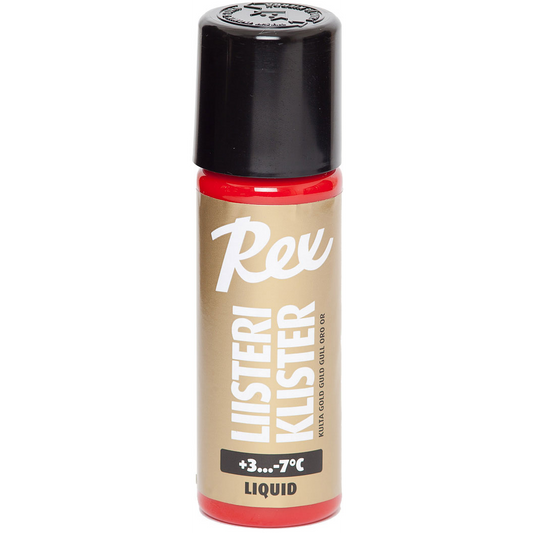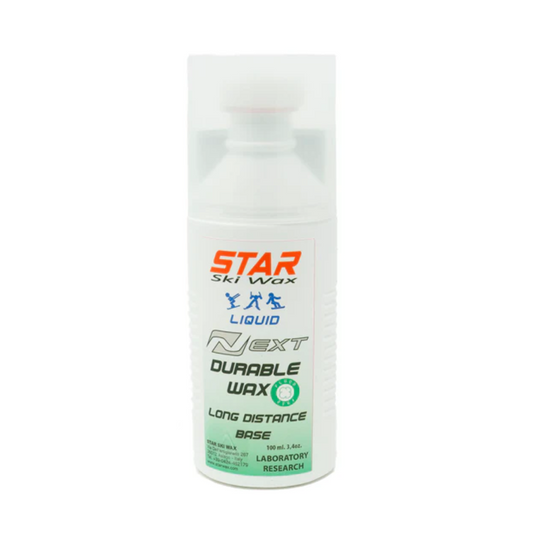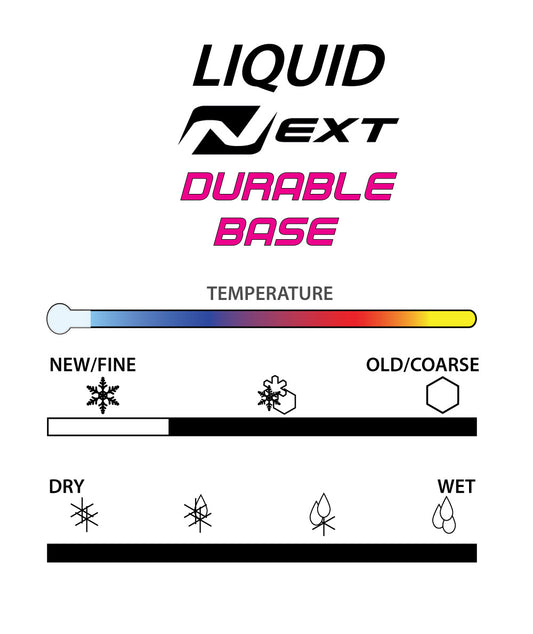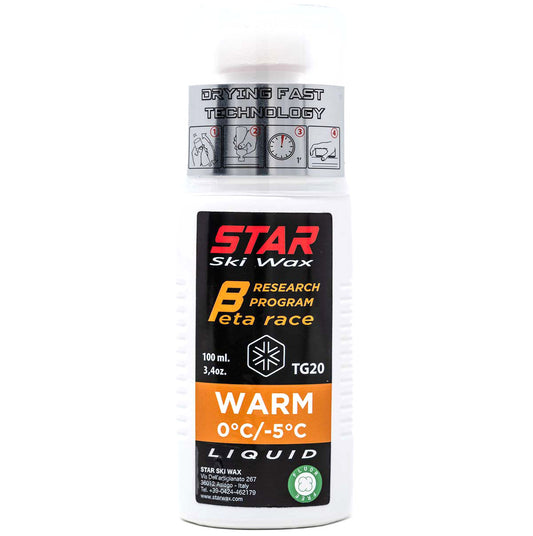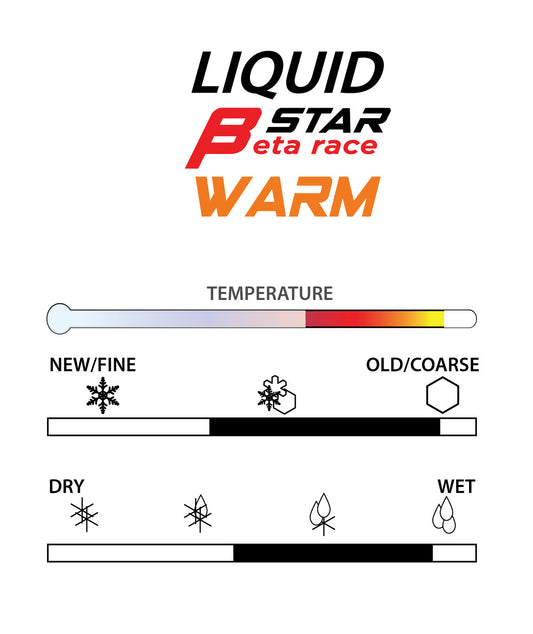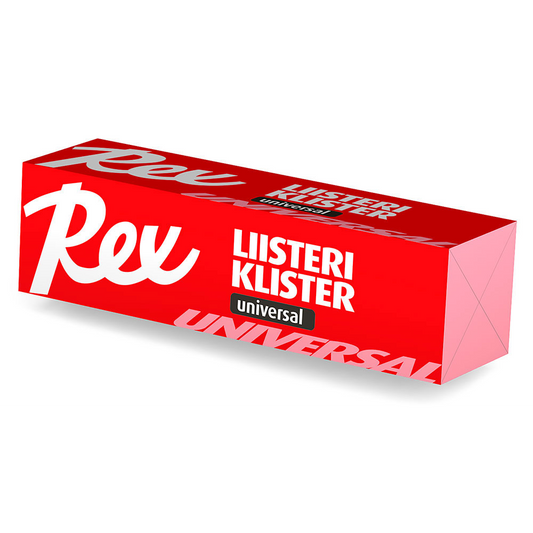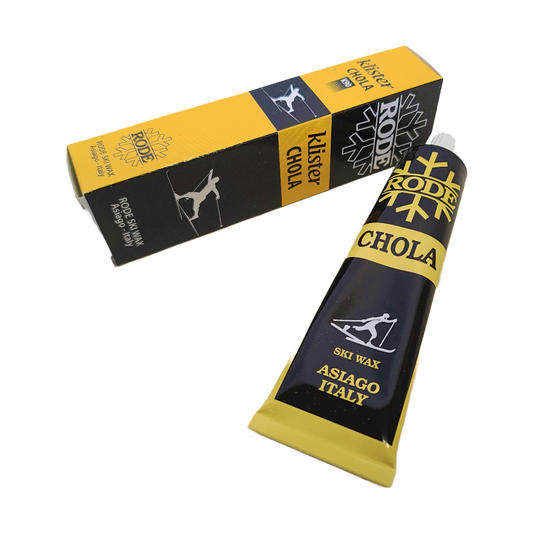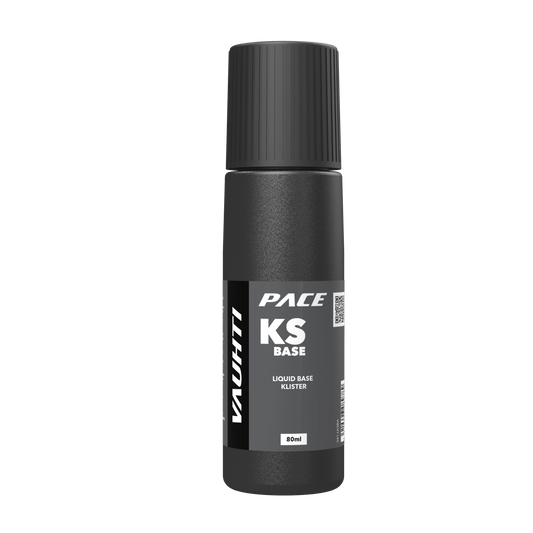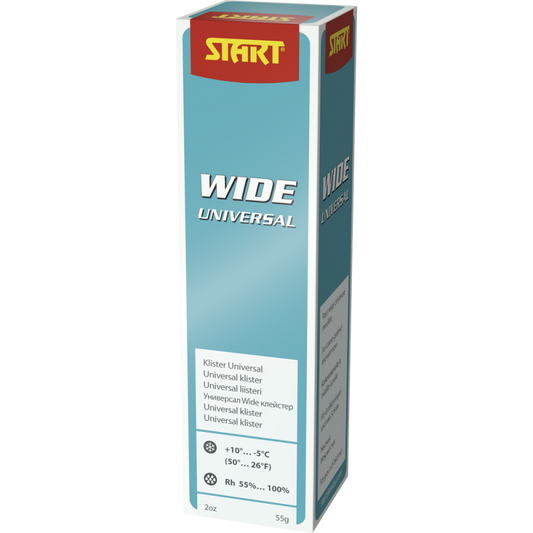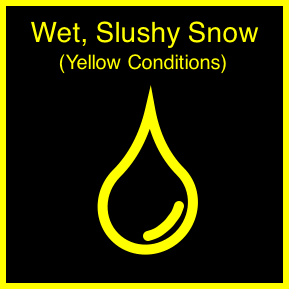
Yellow Snow Conditions (Wet, Slushy, Old Snow, +20°C to 0°C)
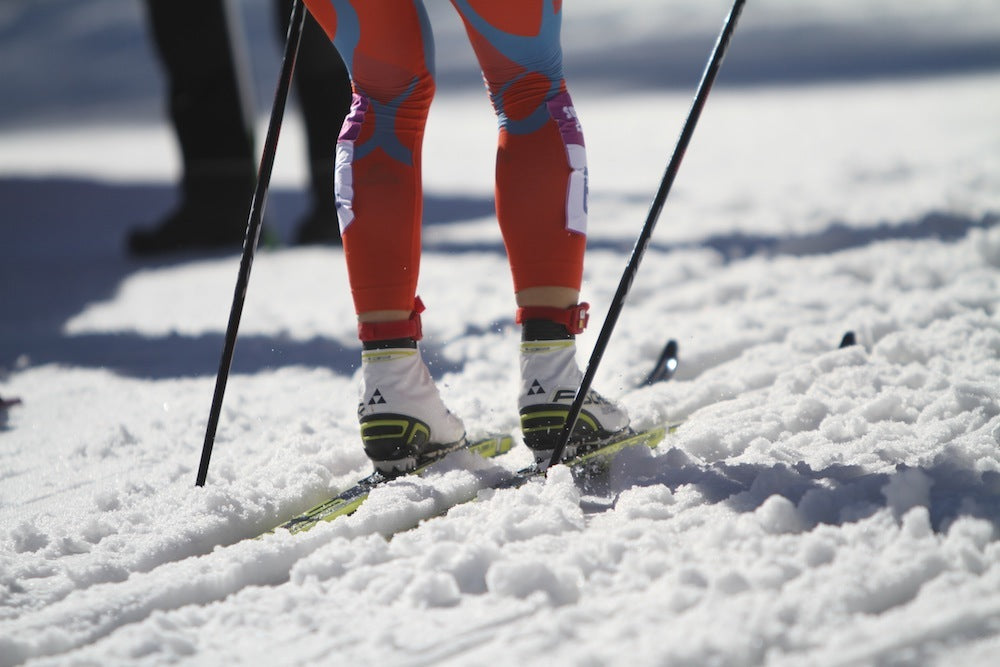
Yellow conditions occur when old snow is thoroughly saturated with water. It's slushy; it's wet; it's warm; it's old and usually coarse-grained and dirty. The temperature range for these conditions is 0C to... the warmest it can be with snow on the ground! 'Yellow' snow is heavily transformed. It has been through a melt/freeze cycle or two and has become corny or coarse-grained. Because the snow transformed, it tends to drain better than 'Pink' snow since the space between the individual ice crystals allows water to drain away. You're still dealing with a lot of water either way, so your main waxing consideration will be to get rid of water from the ski base! The big difference between pink and yellow conditions is the amount of dirt deposited on top of the snowpack. Choosing a wax with compounds to limit the effects of dirt is also key when waxing for yellow conditions.
-
Friction Characteristics
Physically, the wet snow crystal structure has the most rounded edges. This means kinetic friction is very low. The main source of friction in this snow type is suction friction from the vast amounts of liquid water between the ski base and the snowpack. The top priority for glide waxing for these conditions is getting rid of water from the bottom of the ski base. Waxes for this temperature range used to be physically softer (soft waxes are more hydrophobic than harder ones), but in recent years, glide waxes for this temperature range have become much harder to help keep ski bases free of dirt. Fluoro compounds are massively hydrophobic, so anything with fluorination will likely be an excellent choice. Adding aggressive structure to your ski base with a rill tool will have the biggest benefit to glide as the grooves and channels will give water an escape route. Often waxes with dirt-repellent compounds have a leg up on others since dirt builds upon the surface of the snow as it melts. Waxes with molybdenum or graphite tend to stay fast in yellow conditions over long distances.
-
Kick Waxing
Snow crystals in yellow conditions have melted into round, wet blobs. This makes finding a grip wax that is able to stick to snow crystals very tricky. The water surrounding the snow crystals acts as a lubricant, which is the equivalent of having oil on your brake pads. This means in order to find a kick wax that gets grip in this kind of snow; you'll have to get something as soft and sticky as possible: hence, klister! Hard wax is a no-go when the snow gets this wet, but rub skis (hairys or zeros), skin skis, and fish scales tend to work quite well if Klister isn't your thing. Again, a klister with Fluoros or other dirt and water-repelling compounds will help your grip wax glide.
Products for Yellow Snow Conditions
-
Rode Multigrade Klister K76 | 60g (6C/-6C)
Regular price $23.96 CADRegular priceUnit price / per$0.00 CADSale price $23.96 CAD212 in stock -
Rode RXD ENDURANCE GLIDER MELT WAX (10C/-20C)
Regular price From $34.96 CADRegular priceUnit price / per$0.00 CADSale price From $34.96 CAD166 in stockRode RXD ENDURANCE GLIDER MELT WAX (10C/-20C)
Regular price From $34.96 CADRegular priceUnit price / per$0.00 CADSale price From $34.96 CADRode RXD ENDURANCE GLIDER MELT WAX (10C/-20C)
Regular price From $34.96 CADRegular priceUnit price / per$0.00 CADSale price From $34.96 CAD -
Rode Rossa Klister K40 | 60g (4C/-2C)
Regular price $23.96 CADRegular priceUnit price / per$0.00 CADSale price $23.96 CAD156 in stock -
Rode RXLW RACING EXTRA LIQUID WARM | 80ml (0C/-3C)
Regular price $33.96 CADRegular priceUnit price / per$49.96 CADSale price $33.96 CAD16 in stockSale -
Rode RLW RACING LIQUID WARM (0C/-3C)
Regular price From $27.96 CADRegular priceUnit price / per$0.00 CADSale price From $27.96 CAD88 in stockRode RLW RACING LIQUID WARM (0C/-3C)
Regular price From $27.96 CADRegular priceUnit price / per$0.00 CADSale price From $27.96 CADRode RLW RACING LIQUID WARM (0C/-3C)
Regular price From $27.96 CADRegular priceUnit price / per$0.00 CADSale price From $27.96 CAD -
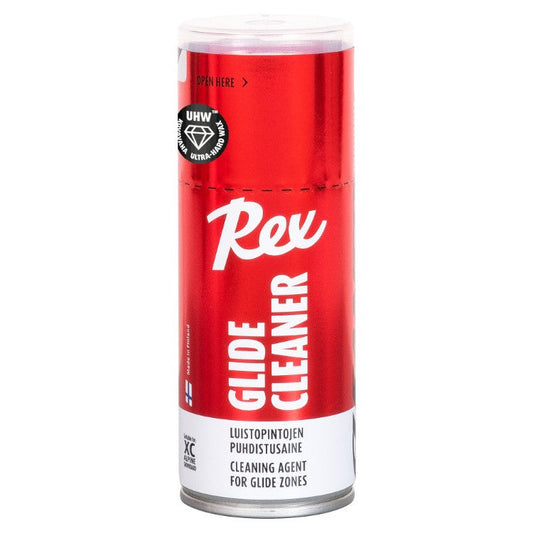
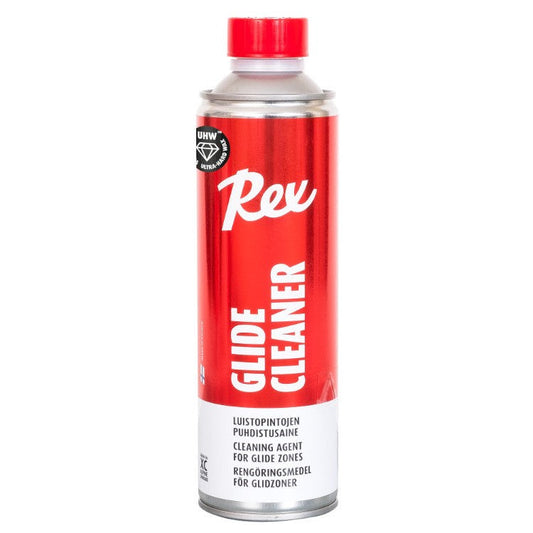 Sold out
Sold outRex Wax Glide Cleaner UHW
Regular price From $37.80 CADRegular priceUnit price / per$0.00 CADSale price From $37.80 CADUnavailableRex Wax Glide Cleaner UHW
Regular price From $37.80 CADRegular priceUnit price / per$0.00 CADSale price From $37.80 CADRex Wax Glide Cleaner UHW
Regular price From $37.80 CADRegular priceUnit price / per$0.00 CADSale price From $37.80 CADSold out -
Rode R100G RACING GLIDER GRAFITE MELT WAX (-5C/-30C)
Regular price From $34.96 CADRegular priceUnit price / per$0.00 CADSale price From $34.96 CAD138 in stockRode R100G RACING GLIDER GRAFITE MELT WAX (-5C/-30C)
Regular price From $34.96 CADRegular priceUnit price / per$0.00 CADSale price From $34.96 CADRode R100G RACING GLIDER GRAFITE MELT WAX (-5C/-30C)
Regular price From $34.96 CADRegular priceUnit price / per$0.00 CADSale price From $34.96 CAD -
Rode R50 RACING GLIDER YELLOW MELT WAX (10C/-1C)
Regular price From $24.96 CADRegular priceUnit price / per$0.00 CADSale price From $24.96 CAD102 in stockRode R50 RACING GLIDER YELLOW MELT WAX (10C/-1C)
Regular price From $24.96 CADRegular priceUnit price / per$0.00 CADSale price From $24.96 CADRode R50 RACING GLIDER YELLOW MELT WAX (10C/-1C)
Regular price From $24.96 CADRegular priceUnit price / per$0.00 CADSale price From $24.96 CAD -
Swix HS8 Red Melt Glider (4C/-4C)
Regular price From $50.00 CADRegular priceUnit price / per$0.00 CADSale price From $50.00 CAD24 in stockSwix HS8 Red Melt Glider (4C/-4C)
Regular price From $50.00 CADRegular priceUnit price / per$0.00 CADSale price From $50.00 CADSwix HS8 Red Melt Glider (4C/-4C)
Regular price From $50.00 CADRegular priceUnit price / per$0.00 CADSale price From $50.00 CAD -
Rex Wax Base Liquid Klister | 60ml
Regular price $32.95 CADRegular priceUnit price / per$0.00 CADSale price $32.95 CAD27 in stock -
Swix PS8 Red Melt Glider (4C/-4C)
Regular price From $25.00 CADRegular priceUnit price / per$0.00 CADSale price From $25.00 CAD41 in stockSwix PS8 Red Melt Glider (4C/-4C)
Regular price From $25.00 CADRegular priceUnit price / per$0.00 CADSale price From $25.00 CADSwix PS8 Red Melt Glider (4C/-4C)
Regular price From $25.00 CADRegular priceUnit price / per$0.00 CADSale price From $25.00 CAD -
Rex Wax Gold Klister (3C/-7C) | 55ml
Regular price $23.95 CADRegular priceUnit price / per$0.00 CADSale price $23.95 CAD6 in stock -
Guru Extreme 39 Klister (7C/-2C) | 55g
Regular price $40.00 CADRegular priceUnit price / per$0.00 CADSale price $40.00 CADPre-Order Available -
Vauhti GS BASE SUPER Liquid Grip | 80ml
Regular price $32.00 CADRegular priceUnit price / per$0.00 CADSale price $32.00 CAD16 in stock -
Rode LGM LIQUID GLIDER MULTIGRADE (10C/-20C)
Regular price From $23.96 CADRegular priceUnit price / per$0.00 CADSale price From $23.96 CAD116 in stockRode LGM LIQUID GLIDER MULTIGRADE (10C/-20C)
Regular price From $23.96 CADRegular priceUnit price / per$0.00 CADSale price From $23.96 CADRode LGM LIQUID GLIDER MULTIGRADE (10C/-20C)
Regular price From $23.96 CADRegular priceUnit price / per$0.00 CADSale price From $23.96 CAD -
Rex Wax G41 Pink/Green 'UHW' N-Kinetic Liquid Glider (5C/-20C)
Regular price From $39.95 CADRegular priceUnit price / per$0.00 CADSale price From $39.95 CAD16 in stockRex Wax G41 Pink/Green 'UHW' N-Kinetic Liquid Glider (5C/-20C)
Regular price From $39.95 CADRegular priceUnit price / per$0.00 CADSale price From $39.95 CADRex Wax G41 Pink/Green 'UHW' N-Kinetic Liquid Glider (5C/-20C)
Regular price From $39.95 CADRegular priceUnit price / per$0.00 CADSale price From $39.95 CAD -
Rex Wax Racing Glide Blue Paraffin (-1C/-10C)
Regular price From $23.95 CADRegular priceUnit price / per$0.00 CADSale price From $23.95 CAD14 in stockRex Wax Racing Glide Blue Paraffin (-1C/-10C)
Regular price From $23.95 CADRegular priceUnit price / per$0.00 CADSale price From $23.95 CADRex Wax Racing Glide Blue Paraffin (-1C/-10C)
Regular price From $23.95 CADRegular priceUnit price / per$0.00 CADSale price From $23.95 CAD -
Rex Wax Gold Liquid Klister (3C/-7C) | 60ml
Regular price $32.95 CADRegular priceUnit price / per$0.00 CADSale price $32.95 CAD14 in stock -
STAR NEXT Durable Long Distance Base Liquid (Sponge Application) | 100ml
Regular price $90.00 CADRegular priceUnit price / per$0.00 CADSale price $90.00 CAD37 in stock -
STAR BETA WARM Fluoro-Free Liquid (Sponge Applicator) | 100ml
Regular price $90.00 CADRegular priceUnit price / per$0.00 CADSale price $90.00 CAD28 in stock -
Rex Wax Universal Klister (10C/-30C) | 55ml
Regular price $23.95 CADRegular priceUnit price / per$0.00 CADSale price $23.95 CAD3 in stock -
Rode Chola Klister K90 | 60g
Regular price $23.96 CADRegular priceUnit price / per$0.00 CADSale price $23.96 CAD41 in stock -
Vauhti KS BASE Liquid Klister | 80ml
Regular price $32.00 CADRegular priceUnit price / per$0.00 CADSale price $32.00 CAD6 in stock -
Start Universal Wide Klister (10C/-5C) | 55g
Regular price $44.00 CADRegular priceUnit price / per

